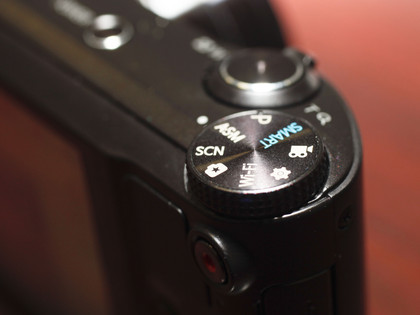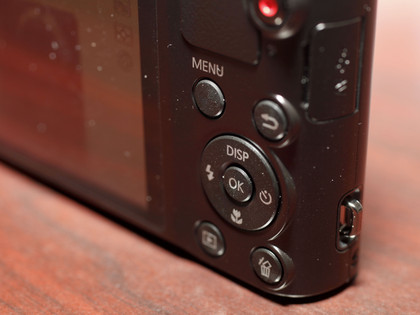Hands on: Samsung WB150F review
We try a pre-production sample of Samsung's more affordable travel zoom camera

At the heart of the Samsung WB150F is a 1/2.3-inch CCD sensor with 14.2 million pixels, but its most exciting feature for many prospective buyers is its Schneider-Kreuznach 18x zoom lens with a focal length equivalence of 24-432mm.
This may not be quite as wide a range as the 23-483mm offered by the Samsung WB850F, launched at the same time. But priced at around £199 in the UK and $229 in the US, the Samsung WB150F costs around £100 less than the camera above it in the range.
While it doesn't have quite the same feel as the WB850F, the WB150F feels very nicely put together, and a slim finger grip gives sufficient purchase when shooting one handed.

Although we got to use a pre-production sample of the Samsung WB150F, the venue for our hands-on was the desert outside Las Vegas, which isn't known for its strong Wi-Fi or 3G signal.

This meant we were unable to test one of the WB150F's key features - the ability to upload, share and email images direct from the camera using Wi-Fi connectivity. However, we looked at the menus associated with these features and it all looks very straightforward.

In fact, the whole menu system is very straightforward and easy to follow.
The navigation control on the rear of the camera also doubles up to offer shortcuts to some of the most popular options including the flash, self-timer and macro focusing controls.
Sign up for breaking news, reviews, opinion, top tech deals, and more.

In addition, the top of the Samsung WB150F has a chunky dial for selecting the exposure mode.

Experienced users will appreciate the ASM option on the mode dial. When it is turned to this option shutter priority, aperture priority or manual exposure mode is selected via the LCD screen.

The bright sunlight in the desert soon revealed one issue with the Samsung WB150F: it doesn't have a viewfinder, and reflections are an issue on its 3-inch 460,000-dot LCD screen. This meant that some compositions were almost guesswork, but on many occasions it was possible to see enough details to frame the image as we wanted.
